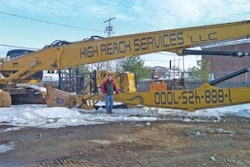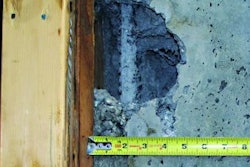Commercial real estate development and construction is a perpetual and valuable economic engine, with spending and directly related outlays generating a significant financial impact and helping to counter the recessionary forces that have undermined the economy's performance since December 2007.
In a new report issued by the National Association of Industrial and Office Properties Research Foundation, the compounded economic impact of commercial development and construction spending reached $288 billion in 2009, as follows:
* $148.6 billion in hard costs (actual construction costs)
* $139.4 billion in soft costs (architecture, engineering, marketing, legal, management), site development and tenant improvements
* An additional $2.52 billion were spent on building operations (maintenance, repair, custodial services, utilities and management)
Development and construction spending declined in 2009 due to the recession's economic contraction, yet it still generated an overall positive contribution to the U.S. economy. Direct outlays for construction spending for office, industrial, warehouse and retail totaled $46.6 billion, down 48 percent from 2007. And although an additional 264.6 million square feet of building space was added to the inventory, it represents a decrease of 68.5 percent compared to 2007.
"This decline in construction spending has resulted in a noticeable effect on the nation's economy, and it has negatively impacted the ability for communities across the county to pull out of the recession," said Thomas J. Bisacquino, NAIOP president and CEO. "This report reconfirms that a healthy real estate economy is vital to a prosperous U.S. economy, and the industry is depending on lawmakers and the administration to continue to free sources of capital so that development can recommence, and the trickledown effect will be seen in increased employment numbers and consumer spending."
Commercial construction spending, employment and personal earnings in a 2009 vs. 2007 comparison:
View chart at http://www.naiop.org/pressroom/news/2011/contdev2010.html.
Report data shows that building (both commercial and residential) and non-building (roads, bridges, etc.) construction spending in 2009 totaled $908 billion and accounted for 6.4 percent of the GDP, well off its high in 2007 when construction spending totaled $1.16 trillion and accounted directly for 8.5 percent of the GDP.
The data and analysis are detailed in "The Contribution of Office, Industrial and Retail Development and Construction to the U.S. Economy" a report authored by Dr. Stephen S. Fuller, director of the Center for Regional Analysis at George Mason University, and funded by the NAIOP Research Foundation.
Recession Effects
The effects of the 2008-2009 recession were felt by all segments of the economy, and the construction sector was disproportionately impacted by the collapse of the financial markets and subsequent decrease in demand for new housing and non-residential building space.
Residential construction peaked in 2005 with starts totaling 2.07 million units and declined to 554,000 housing units in 2009, a decrease of 73 percent. During the first three years of this same time period (2005-2008), non-residential building construction outlays continued to increase, peaking in 2008.
This extended spending helped offset an industry-wide decline that would worsen in 2009 and has continued through 2010. However, with the national economy's accelerating recession, non-residential building construction outlays fell by 20.4 percent in 2009.
Industry Prepared for Employment Growth
Commercial development must be on the leading edge of the eventual economic upturn and be equipped to meet companies' expansion needs as joblessness numbers decline and employment grows. Using standard jobs-per-square feet estimates, the new space developed in 2009 has the capacity to house 674,300 jobs with an annual payroll of $29.8 billion.
The potential productive value of this new building space represents a significant annual contribution to the local, state and national economies. In addition to the significant contribution to GDP and job and income growth nationwide that constructing 264.6 million square feet of new building space represents, these buildings continue to provide economic benefits to their economies after construction is completed. These economic impacts include outlays required to maintain and operate these buildings and the value of the work done in them.
* The operating outlays associated with the office, warehouse and retail space built in 2009 are estimated to total $871.2 million annually.
* This direct spending for building operations would add $2.525 billion to GDP, support 21,222 new jobs and generate $801.4 million in new personal earnings.
* These operating outlays are annual and recur yearly over the life span of the building.
State Rankings
The 10 states with the largest construction values (hard costs only) accounted for 56.1 percent of the construction outlays in the United States, while the top 20 states accounted for 79.4 percent. The most populous states and those with the largest or best performing economies tended to rank highest by value of construction outlays, although there were variations depending on building type.
Top 10 States by Construction Value, 2009
View chart at http://www.naiop.org/pressroom/news/2011/contdev2010.html.
About the Report
This report enables the commercial real estate industry to quantify the numbers that demonstrate its considerable and sustained contribution to the U.S. economy. With this data, public and state and local governments can learn the ways that commercial development makes a positive and lasting contribution to their communities, including:
* Supporting the creation of jobs;
* Generating personal earnings, and;
* Promoting new spending activity across the breadth of the economy.
The report was produced using data provided by the Bureau of Economic Analysis, U.S. Department of Commerce, U.S. Census Bureau, McGraw Hill Construction and a NAIOP member survey. The NAIOP Research Foundation published two previous editions of this report in 2006 and 2008.
To access a copy of the report, visit the NAIOP Research Foundation Web site at www.naioprf.org.
About the NAIOP Research Foundation:
The NAIOP Research Foundation was established in 2000 as a 501(c)(3) organization to support the work of individuals and organizations engaged in real estate development, investment and operations. The Foundation's core purpose is to provide these individuals and organizations with the highest level of research information on how real properties, especially office, industrial, retail and mixed-use properties, impact and benefit communities throughout North America. For more information on how to contribute or for complimentary research reports, visit www.naioprf.org.
Copyright Targeted News Services



















